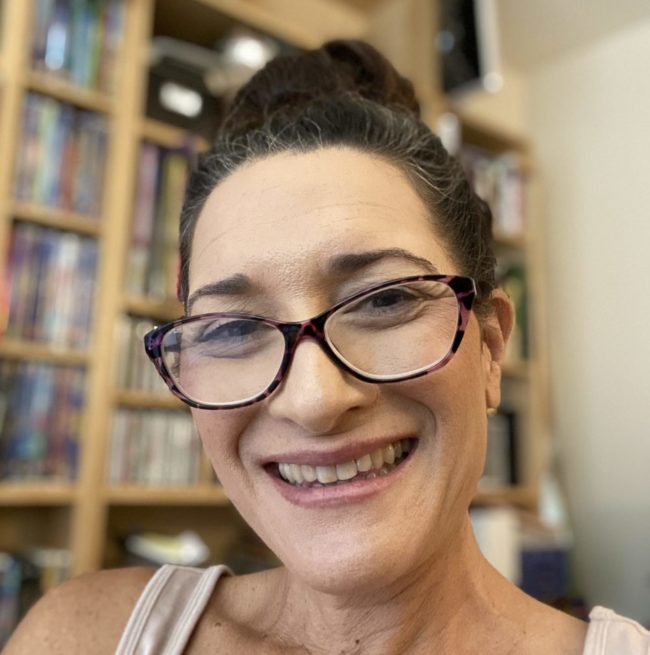
How Covid Affected Student Learning – Part 1
The Week of March 4th, 2019
The country had been going crazy with the politics of President Trump. Protesters were wreaking havoc in cities. Random fires were being set. A real threat to our safety was felt throughout the neighborhood, school, and home.
My first experience/awareness of the panic with COVID-19 was a routine Thursday evening trip to Costco. The parking lot was full like it was a day in December getting close to the holiday season. We could barely find a place to park. The store was packed and buzzing with people. This is super unusual for Thursdays. The main reason I shopped on that day of the week was because it was not packed. On this particular Thursday you could find some people masked while shopping.
The next unusual thing I noticed at Costco was the empty refrigeration meat containers. Not a single piece of chicken was in the store. This was so hard to believe. I bumped into a former coworker. After exchanging pleasantries, I asked her if she felt something strange going on or was it just me. That is when she said that she thought people were reacting to the threat of the Covid virus spreading. Her feelings were confirmed when I rounded over to the toilet paper area and discovered the entire floor to ceiling stocking area was completely depleted of any kind of bathroom tissue.
Small Changes at School
Leading up to the next week at school, students were discussing Leprechaun traps. We were also beginning our unit on double digit subtraction with regrouping. (As any second-grade teacher will tell you, subtraction with regrouping is a challenging hurdle for seven-year-olds.) Although the students were ready to take on the many ways they could decompose numbers, it was a transition period. Mild anxiety was already lurking in the perimeter of the classroom. It just hadn’t taken a front row seat yet.
As I mentioned earlier, our anxiety wasn’t unwarranted. The Covid pandemic and school closures matched all the terror, fear, and anxiety our school community had experienced the previous summer when the foothills next to the school were set on fire by an arsonist. The amount of political unrest at that time, coupled with this act of terror, really caused our community to panic. It was hard to separate truth from fiction. Was this an activist? Were activists setting random fires to split the city’s resources so they could then pillage through local residential homes? For the first time in my life, I felt a serious personal threat to myself and my family. Although the fire was put out and an arrest was made, the fear of the upcoming Covid school closure added to the anxiety that had previously unfolded in the lives of these seven-year-olds. It felt as though each new event fell like a snowflake to an ever-increasing imminent avalanche of tragedies.
The Week of March 13th, 2019
Anxiety took center seat on Friday, March 13th. That week, students started seeing a heightened level of cleaning taking place. Each day, school desks would get wiped down. Door knobs were disinfected. Procedures for coughing and sneezing socially were being reviewed in the classroom. There was a definite undercurrent flowing on campus of unspoken fear and concern. And that’s when I heard the words that will stamp my timeline forever. “Mrs. Gentry, is it here yet?” My mind was split with trying to decipher the question. Is it here yet? Is what here, I’m thinking of what could this little one student possibly be talking about. Such a vague question. And that’s when I took the leap and asked, are you talking about the virus? To which more than one student replied, “Yes!” And that’s when I knew we had a problem and it was time to address it.
How Do You Describe Covid to a Child?
I sat my students down and explained that it’s not quite like a green cloud of evil crawling over the hills or like a blanket of thick fog in the early mornings of February. We talked about colds and how this virus was similar and different. I reminded them that they already knew what to do and we would just have to practice it more often. I doubt my little conversation helped calm the fears they were seeing develop over time, both at home and within their classroom.
By midweek disinfecting after class became routine. The struggle to understand why children seemed to be safe but not the elderly was becoming an uncomfortable familiar conflict in my head. It led to a lot of questions about the students being the carriers and should the adults start protecting themselves.
Note: How Covid Affected Student Learning – Part 2 will be published on August 9, 2022.

Danielle’s first step in education did not begin with education at all. It began with her first love for science. She received a B.S. in Biological Science, with a concentration in Molecular Biology. Her five years of experience as a chemist in the biotech industry at SYVA and Dade Behring Diagnostics include both areas of quality control and research and development. Her contributions were qualifying products for release to sell to the diagnostic market as well as developing new diagnostic technology for immunoassay detection. Danielle’s subtle transition to discovering her passion for education was through the birth of her daughter. She became a stay at home mom. Her uber volunteerism at her daughter’s elementary school gained her access to her path of education. She now holds a multiple subject teaching credential and M.A. in Education from National University. She has over ten years of experience at Sakamoto Elementary School as an educator in kindergarten, sixth grade, second grade, and a 2/3 combination class. Her teaching is rooted in a constructivist model while fostering independence and accountability in the classroom.

